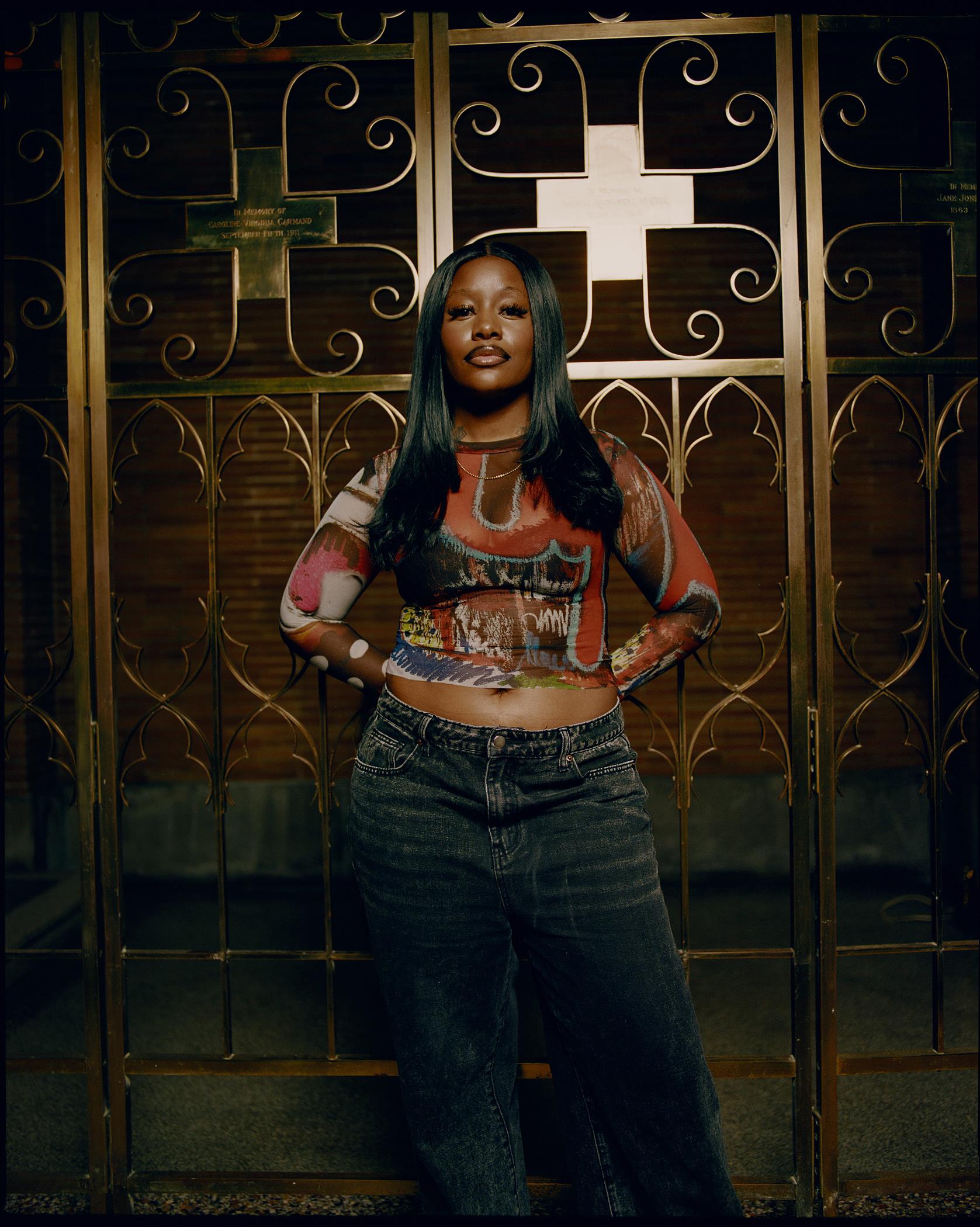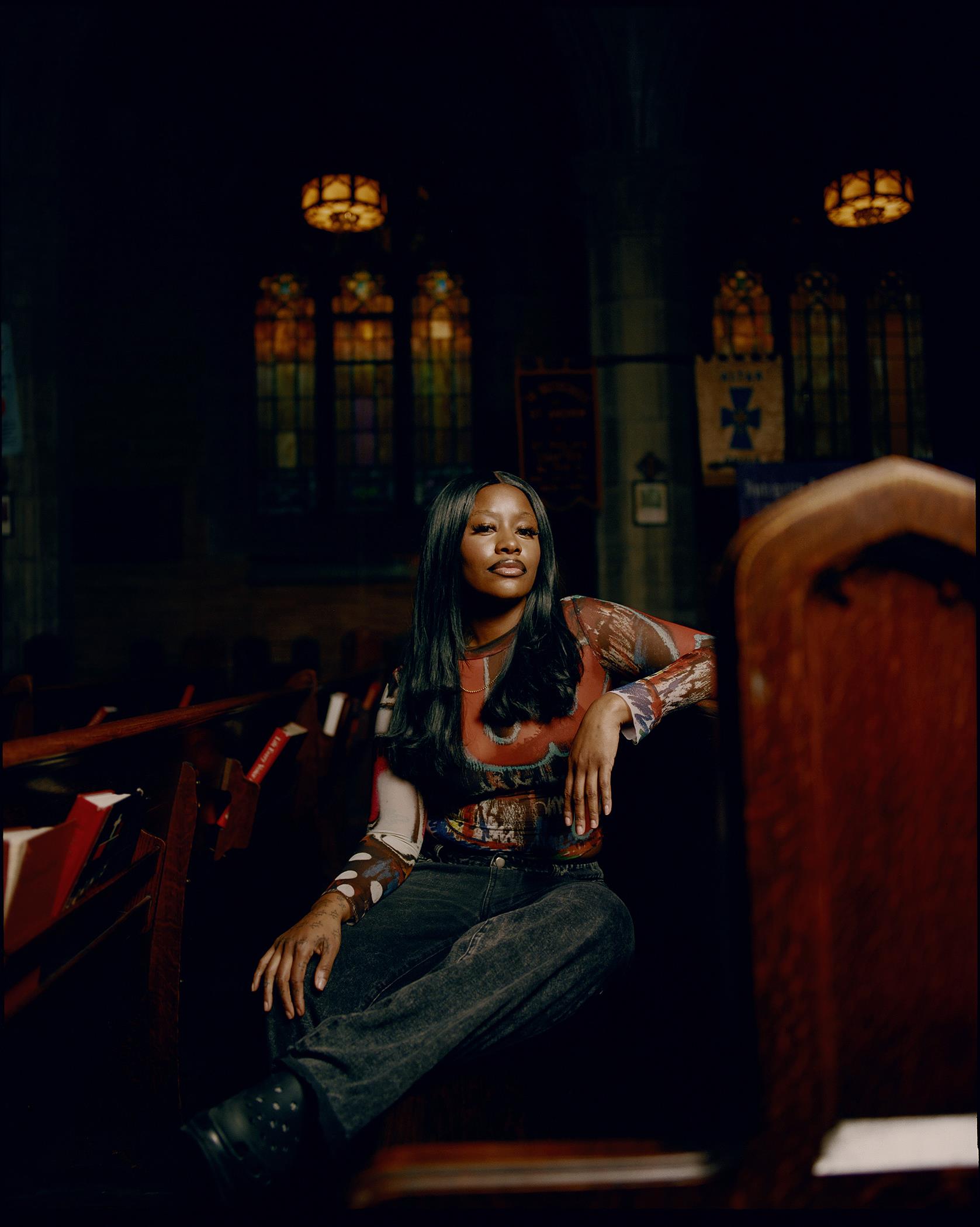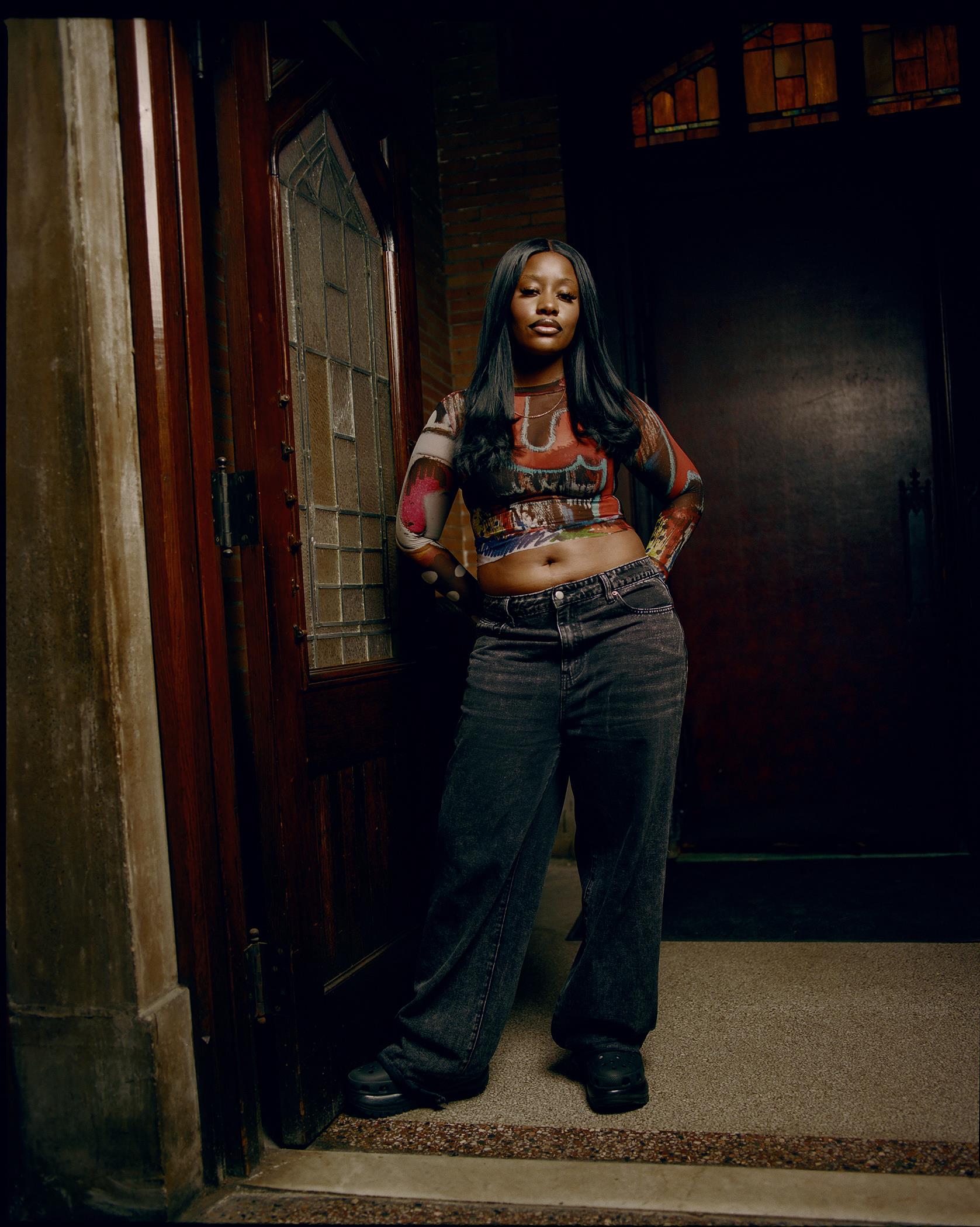How did your most uncomfortable season in fashion catapult your career?
“I think my most uncomfortable season was during the pandemic. I think everyone had big hopes for 2020. We thought it would be a major year, then the whole world shut down. The experience was a bit jarring collectively because it was the first time that ever happened to anyone. During the pandemic in 2021, I put out a collection. When I look back, I recognize that the collection was random things I wanted to try and details I wanted to get out, just to do something. The collection was not the most cohesive because I kept adding random things, just adding to and adding to it.
I am a former fashion professor and there are certain things you expect from students yet I was not holding myself to the same standard. I am now creating a collection in the same way that I would encourage a student to do. First, I sketched out everything, got all my swatches, got all my hardware, got all my prints and paintings out and then did my schedule. That is what I have done before I even started cutting anything or buying any fabric.
Back to the 2021 collection, I did it completely backwards. I just like doing stuff but I honed on detailing and my sewing skills were refined more. But, at the end of the day, it is hard for a consumer to engage a collection that feels like an incomplete conversation. I started painting and drawing in different ways because I did not have the resources to do anything fashion related at all. Then these paintings turned into prints which became my collection that was released in June 2022.”
What inspiration have you developed from your mistakes in fashion?
“I believe not giving myself any limitations was my biggest mistake. When you come from a school program, you have to work within these boundaries. You have someone telling you no to this and no to that even if they do not understand the direction you are trying to go in. I really was like ‘forget all that.’ That is a huge mistake. You can do what you want but you still have to work within boundaries that you set for yourself. You need to develop your color story and stick with it for this season. If not, you will buy the crazy fabric because you think it is pretty. Then you have a collection that is a little off. You can go out of the box but first, develop a singular universe. Then after you make pieces within that universe, you can add in other layers. The mistakes have been the best things to happen to me.”
How does your darkness illuminate your inner light?
“When you are working from a dark place, you are not thinking of how other people can look at your work and be like, ‘Wow, this is actually really calming. This is relaxing, this makes me feel happy.’ I do not consciously try to make things that people will find a light in, I just make things that feel real to me. But I do really appreciate it when someone finds beauty, happiness, or lightness in my work, even though it might have come from a dark place. I went to a Catholic school between 2nd and 8th grade wearing a uniform, going to church once a month, and confessing to a pastor. I have never spoken about my extremely religious Catholic school upbringing in fashion. Now I am realizing it does affect my work because I believe in just laying it all out there, whether it is dark or hard for people to hear. And they can feel how they feel when they see it.
I am grateful to have a space. I am grateful to be given second chances. I walked away from fashion and then it called me back. I am super grateful for that because if it was not for Made reaching back out last year, I do not know where I would be right now. I had been in terrible mental states. I am grateful for the universe not giving up on me. I am now at a place where I feel like I am the best that I have ever been.”
How do you believe Black history guides the future?
“I think Black history is the basis for everything.. it is the foundation. I am definitely inspired by Black and radical women and anybody who puts their life on the line for what they believe in. I have not put my life on the line. I have not done as much as them. Absolutely not.
I read a lot about James Baldwin, Nikki Giovanni and Asata Shakur. There are modern day people I am super inspired by like Solange Knowles. She really does whatever she wants and she does it beautifully. And, of course, the Sun Raw Collective with Freddy Z, who are living in the future and doing what they want.
I have done my research, but now, what do you do with your life? I do not want to exploit my culture’s history or anyone else’s history. I try to make my own history by doing things that I feel are super original and have not been done before, which people say you cannot do. I am a black girl, I can do it. Black people’s stories have not been told to the point where we can not present original work. We have not always been able to tell our stories, but now we will through creativity.”
Your Your Story Told Your Way Black History Month series celebrates fashion leaders and creators via curated conversations that welcome authenticity and honor brand identities. These conversations steer clear of trauma to encourage fashion leaders to also be a beacon of light.
Photographed by Kendall Bessent at the historic St. Philip’s Episcopal Church, the first parish for Black people, architected by Vertner Woodson Tandy.









